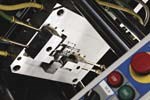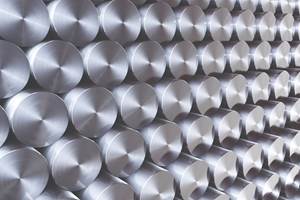Understanding the Advantages Of U.S. Molds
The key to setting your shop’s direction toward the best targets is knowing one’s advantages when it comes to a U.S.-built mold.
Contrary to some perceptions, U.S. mold builders still have a lot going for them. Granted, the going has gotten tougher over the past 10 years, but it’s not as though a shop owner is stuck owning a buggy whip store in an automotive era. There are many areas in which to compete and serve mold buyers in order to remain viable.
Having grown up in the U.S. mold industry, and now having spent considerable time in the Europe and Asia markets, I wonder at times if U.S. mold buyers—and even mold builders—truly appreciate the advantages of a U.S.-built mold. Knowing one’s advantages can assist in setting one’s business in the right direction toward the best targets.
Concerns
Before describing some advantages, let’s be sure we are being honest with ourselves on some legitimate concerns.
Overseas Tools
It’s important to acknowledge that for some mold buyers, their volume is high enough to justify all of the prep and maintenance that comes with developing sources in lower cost regions such as Canada, Portugal and Singapore. For those willing to withstand more risk toward a perceived reward, Poland, Taiwan, and now of course China, are countries that come to mind for even lower cost tooling.
In some instances, the case to be made for an imported tool stands up to an argument. For example, some piece parts may be very simple, or perhaps confidentiality is not as much of a concern or maybe the tool is not built to run for a long period of time. But these arguments do not apply to every mold buyer, and they’re not applicable to every mold.
Future Product Development
Another legitimate concern is that ‘the center of gravity is moving’. This concern is regarding the molds that we don’t see or even get to bid on. The tooling for entire product platforms is being researched and developed, prototyped, tooled, run and assembled overseas.
However, not only is it hard to imagine R&D discontinuing in the U.S., but the idea of a mass exodus of mold manufacturing flies in the face of growing concerns about the loss of intellectual property rights within rogue regions.
So yes, some mold buyers will develop overseas sources, and yes there will be some corporate decisions made to shift entire program development offshore. But, these factors won’t apply to all tools or to the product development plans of all corporations.
Advantages
Location
A clear advantage a U.S. mold builder has is the ability to ‘service what you sell’. Consider the differences between a U.S. mold builder who produces 50 tools per year to an overseas manufacturer who produces 500 tools per year. Each is vying for a role with a tooling engineer for a 10-mold program. The local mold builder knows that the tools will be seen again later, so while the P.O. is still just a glimmer in the eye, already the local toolmaker’s approach is going to include the use of quality steels and components, and he’s going to make the tools easy to service and not take any short cuts that will lead to dreaded ‘no charge fixes’.
On the other hand, those at a faraway factory know that the mold will not be seen again, and often, despite claims of German steels and American brand components, what may actually be received can be something quite different. Often, every possible shortcut will be taken unless the mold buyer is adamant about contents and design approach. And even then, “They faked the steel certs!” has been heard.
Even before the molds are built, this difference in mindsets shows how one moldmaker’s tools are more likely to become a good investment over time, while the other moldmaker’s are more vulnerable to becoming an expensive drain on profits.
Having binged on chasing savings, some corporations now experienced in global mold procurement are giving greater consideration to lifetime value versus short-term cost.
Only the inexperienced mold buyer believes that two RFQs sent to two very different toolmakers are actually a comparison of two equivalent tools.
Big Savings?
It’s been said by a U.S. mold buyer, “The price difference for equivalent tools is getting closer” between U.S. mold builders and overseas mold builders. Recently the 2 percent revaluation of the Chinese yuan has been viewed as a mostly ceremonial gesture, though a different mold buyer said, “If it goes up another 7 to 8 percent, then it would help the cause for U.S. mold builders.”
After the economic blow of 1999-2001, U.S. mold builders that are now standing have adopted lean practices and process optimization. This reduction of time and labor has helped reduce costs, and today’s pricing may be closer than in the past.
A mold builder in India recently said, “We used to target export molds for Europe and the U.S., but not anymore. The tooling engineers are getting more stringent, our costs are starting to go up, while European and U.S. mold builders are starting to be more competitive, eliminating the big savings. So instead, we’re moving our focus more on serving our local customers.”
The declining dollar over the past two years has not helped European toolmakers. Low-end Asian tools also decline in price with their currency tied to the dollar, while high-end U.S. tools are more competitive to their Swiss and German counterparts.
Full Service
Some U.S. mold builders use a full-service approach that their overseas competition can’t match, which consists of upfront input to optimize part design that can go so far as to eliminate some parts altogether within complex assemblies or simplify details to be more easily molded.
Meanwhile, others in the U.S. manage larger tooling programs, and instead of turning down simpler tools to overseas competitors, provide an imported tool while controlling the design and continuing the customer contact. They also provide mold maintenance and are better able to react to engineering changes to the molded part. This approach contends with corporate mandates for overseas tooling while containing the negative impact.
Confidentially Speaking
Innovation and proprietary design hold great importance to an OEM’s success or failure. Numerous stories are emerging of duplicate tools built by faraway mold builders. A local mold builder overwhelmingly holds the advantage of the trust factor. Some mold buyers don’t have the resources to police a distant toolmaker, whose great turnover rates may increase the concern.
Not only may the product design be proprietary, but the high-end tooling for medical molds and high-speed packaging molds may transfer know-how to an OEM’s overseas competition. In effect, an OEM not being careful may cut off its own entry into a market by enabling competitors to catch up before they arrive in a market.
Who Ya Gonna Call?
Over the life of the mold, the value of that tooling investment can be helped through a sound relationship with the mold builder, which involves communication during the program launch and part revs to be in sync with, a familiarity with the mold buyer’s past preferences, the assistance during startup and any service after startup. An informed buyer doing the math may forego the lure of seemingly cheap overseas tooling.
With a U.S. mold builder, the mold buyer has a bigger presence with the smaller volume shop, which could prove to be salvation should any unexpected surprises occur at any time over the life of the tool. When there’s trouble, one needs to be able to reach for a friend rather than a faraway factory.
Advantage: TBD
Although developments in the last few years have made the game closer, overseas challenges won’t disappear. Where the advantage resides will not only change over time, but it will also sway in one direction or the other for particular types of tooling and customers’ particular needs. But at least there is some rethinking occurring, and U.S. mold builders can now arm themselves to be more competitive ahead.
Related Content
It Starts With the Part: A Plastic Part Checklist Ensures Good Mold Design
All successful mold build projects start with examining the part to be molded to ensure it is moldable and will meet the customers' production objectives.
Read MoreHow to Determine the Proper Vent Depth
Vent depth is critical to optimizing mold performance, so here is one approach to finding that elusive right number.
Read MoreHands-on Workshop Teaches Mold Maintenance Process
Intensive workshop teaches the process of mold maintenance to help put an end to the firefighting culture of many toolrooms.
Read MoreWhat You Should Consider When Purchasing Modified P20 Steel
When buying P20 steels that have been modified, moldmakers must be aware of the variations and key issues that affect delivery, cost and lead times.
Read MoreRead Next
Reasons to Use Fiber Lasers for Mold Cleaning
Fiber lasers offer a simplicity, speed, control and portability, minimizing mold cleaning risks.
Read MoreHow to Use Continuing Education to Remain Competitive in Moldmaking
Continued training helps moldmakers make tooling decisions and properly use the latest cutting tool to efficiently machine high-quality molds.
Read More

















